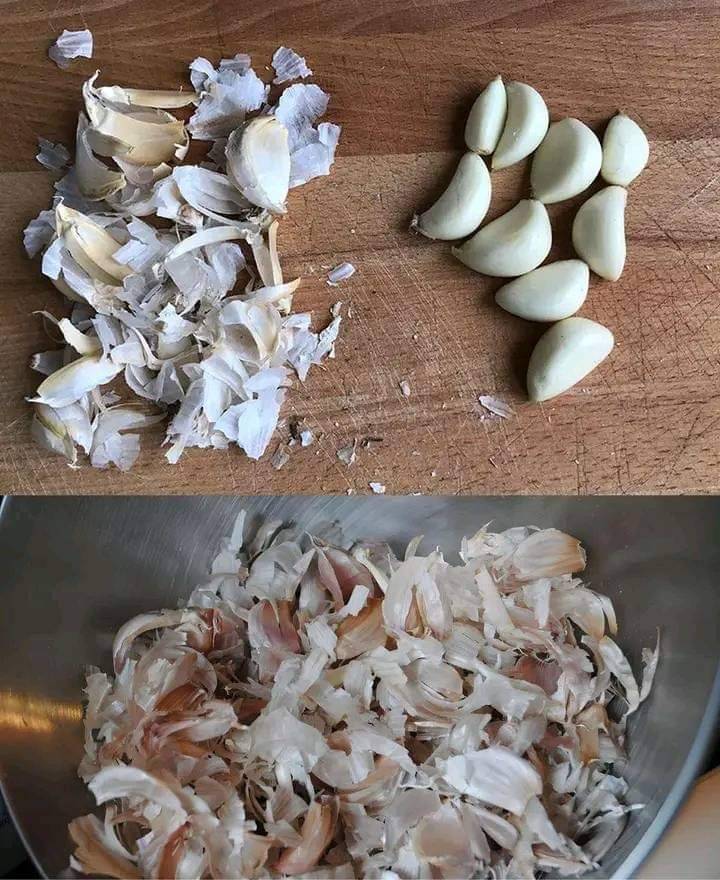ADVERTISEMENT
**Onion and Garlic Skins: The Unexpected Kitchen Treasure**
When we think of cooking with onions and garlic, our minds often focus on their flavorful insides—the pungent, aromatic bulbs that form the foundation of many dishes. However, the often-overlooked skins of onions and garlic offer a world of culinary possibilities that can be both practical and surprising. From enhancing the flavor of your meals to offering health benefits, **onion and garlic skins** are a valuable resource that deserves more attention in the kitchen.
In this article, we’ll explore how to use onion and garlic skins in various ways, from flavor boosters to natural dyes, and discover how these humble scraps can add value to your cooking and sustainability practices.
### Why Use Onion and Garlic Skins?
Before we dive into the how-to’s, let’s first discuss why you should consider using onion and garlic skins.
1. **Rich in Nutrients**: Both onion and garlic skins contain antioxidants, vitamins, and minerals, particularly flavonoids like quercetin, which has anti-inflammatory properties. These compounds offer potential health benefits, such as improving heart health and boosting the immune system.
2. **Flavor Enhancement**: When simmered, onion and garlic skins infuse a rich, deep flavor into broths, stocks, and soups. They impart a mild, savory taste that complements the natural sweetness of onions and garlic.
3. **Sustainability**: By using onion and garlic skins instead of discarding them, you’re reducing kitchen waste and making the most of every part of these vegetables. It’s a small but effective way to contribute to a more sustainable kitchen.
### Ways to Use Onion and Garlic Skins
#### 1. **Flavorful Broths and Stocks**
One of the easiest and most popular ways to use onion and garlic skins is by adding them to homemade broths and stocks. The skins, while seemingly too tough to consume directly, release a rich color and flavor when simmered. They add depth to both vegetable and meat-based stocks, making them an excellent base for soups, stews, and sauces.
**How to Use**:
– Save your onion and garlic skins as you prep your meals.
– Add them to a large pot with water, along with any other vegetable scraps you have (like carrot peels, celery leaves, etc.).
– Simmer for at least 30-45 minutes, then strain out the solids to get a flavorful, aromatic stock. This homemade broth can be frozen for later use.
#### 2. **Natural Dye for Fabric or Eggs**
Onion and garlic skins aren’t just useful in the kitchen—they can also be used to create natural dyes! Onion skins, in particular, produce a beautiful range of golden to reddish-brown shades, while garlic skins offer a more muted brown tone. This makes them perfect for dyeing fabric, Easter eggs, or even paper crafts.
**How to Use**:
– Collect several onion and garlic skins (yellow or red onions work best for dyeing).
– Boil them in a pot of water for about 30-45 minutes until you achieve your desired color intensity.
– Strain the skins out of the liquid, and then dip your fabric, eggs, or paper into the dye. Let them dry for a natural, earthy look.
#### 3. **Compost or Fertilizer**
If you’re into gardening or composting, onion and garlic skins are a perfect addition to your compost pile. They break down over time and contribute valuable nutrients back into the soil. These skins can help enrich your compost, encouraging healthier plants.
**How to Use**:
– Simply add your onion and garlic skins to your compost pile or bin.
– Break them down into smaller pieces to speed up decomposition, and mix them in with other compostable materials like fruit and vegetable scraps.
4. **Herbal Tea**
While not as common, onion and garlic skins can be used to make a mild herbal tea. The skins are rich in antioxidants and minerals, making this tea a soothing and health-boosting option, especially in the colder months.
For Complete Cooking STEPS Please Head On Over To Next Page Or Open button (>) and don’t forget to SHARE with your Facebook friends
ADVERTISEMENT
